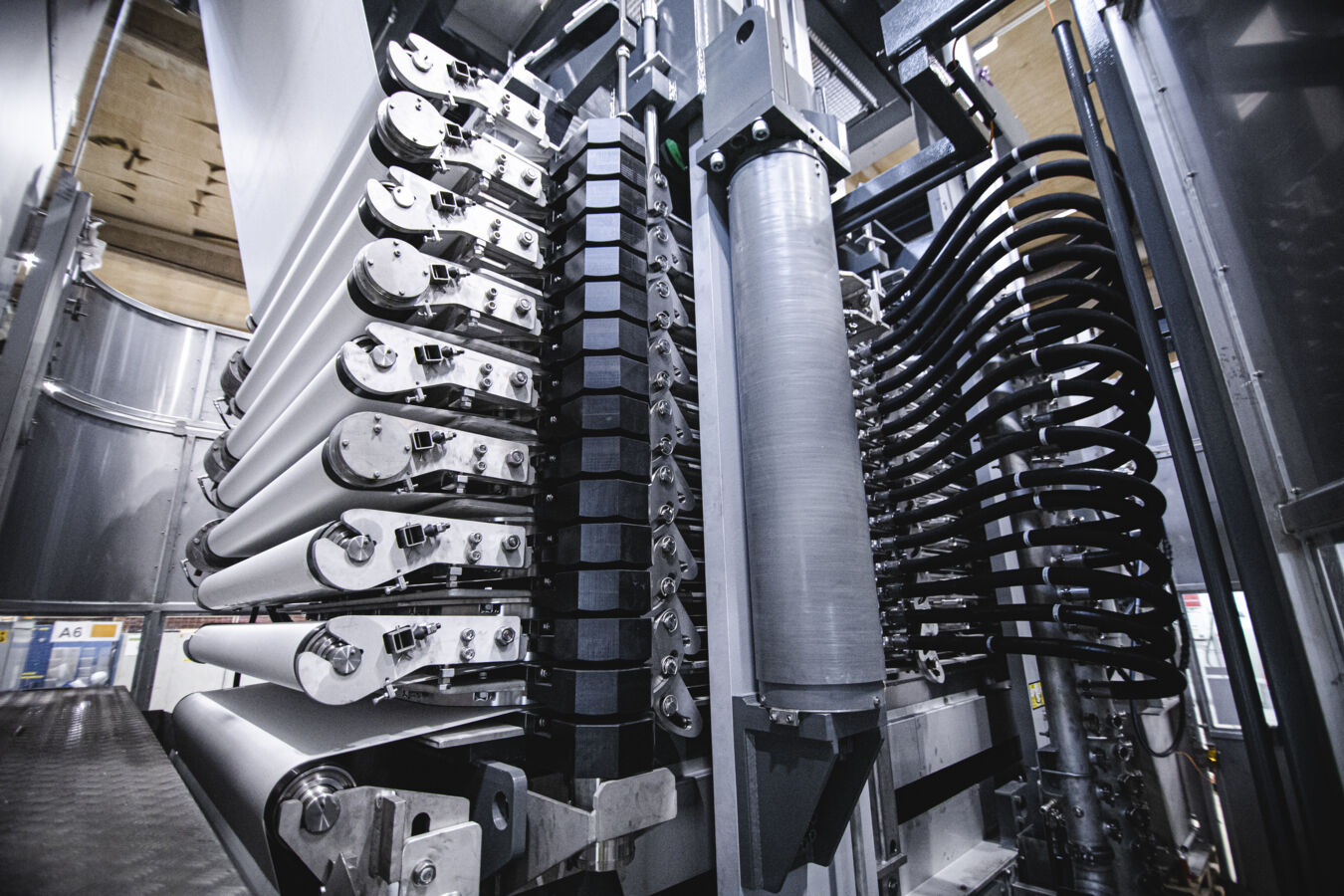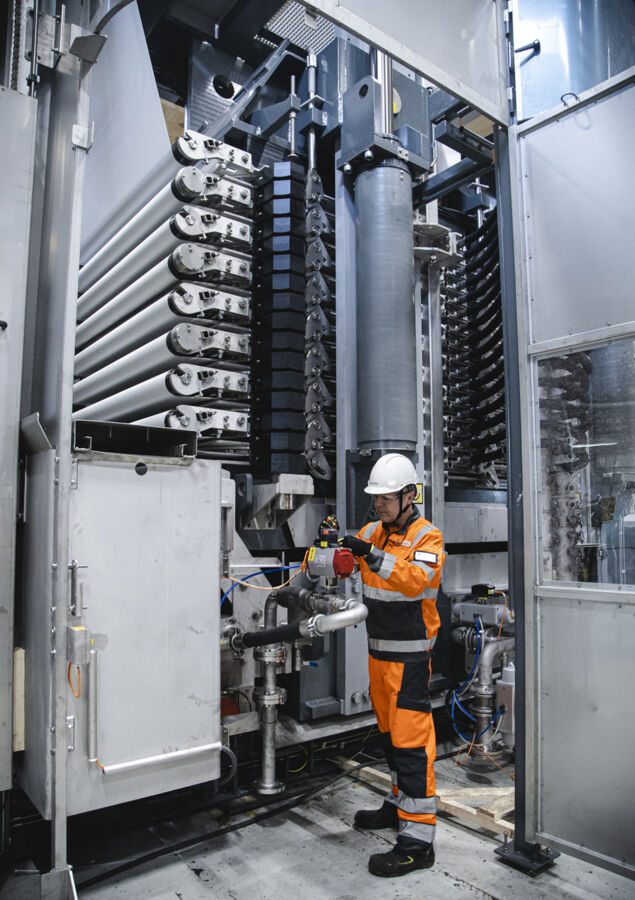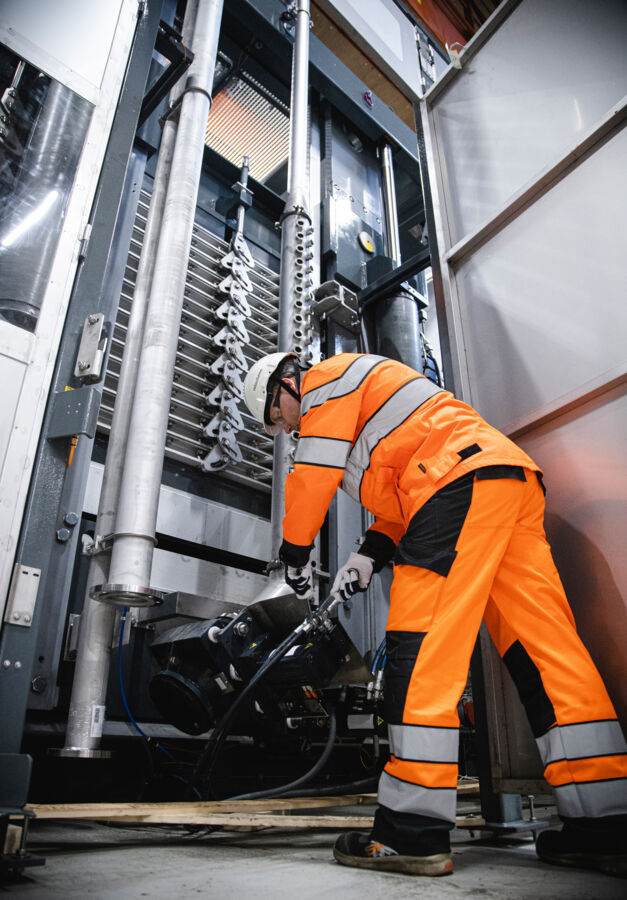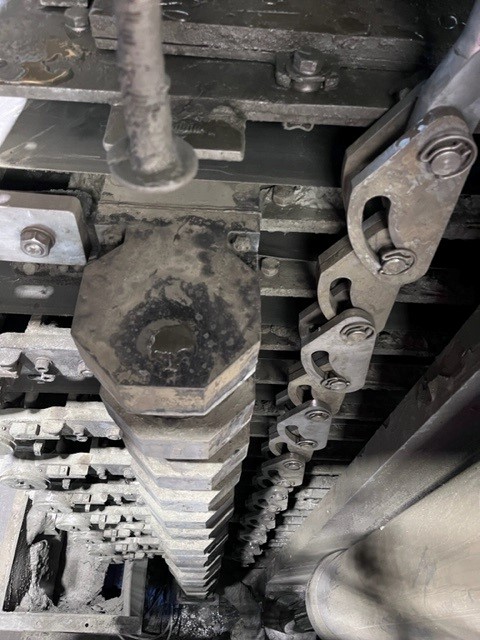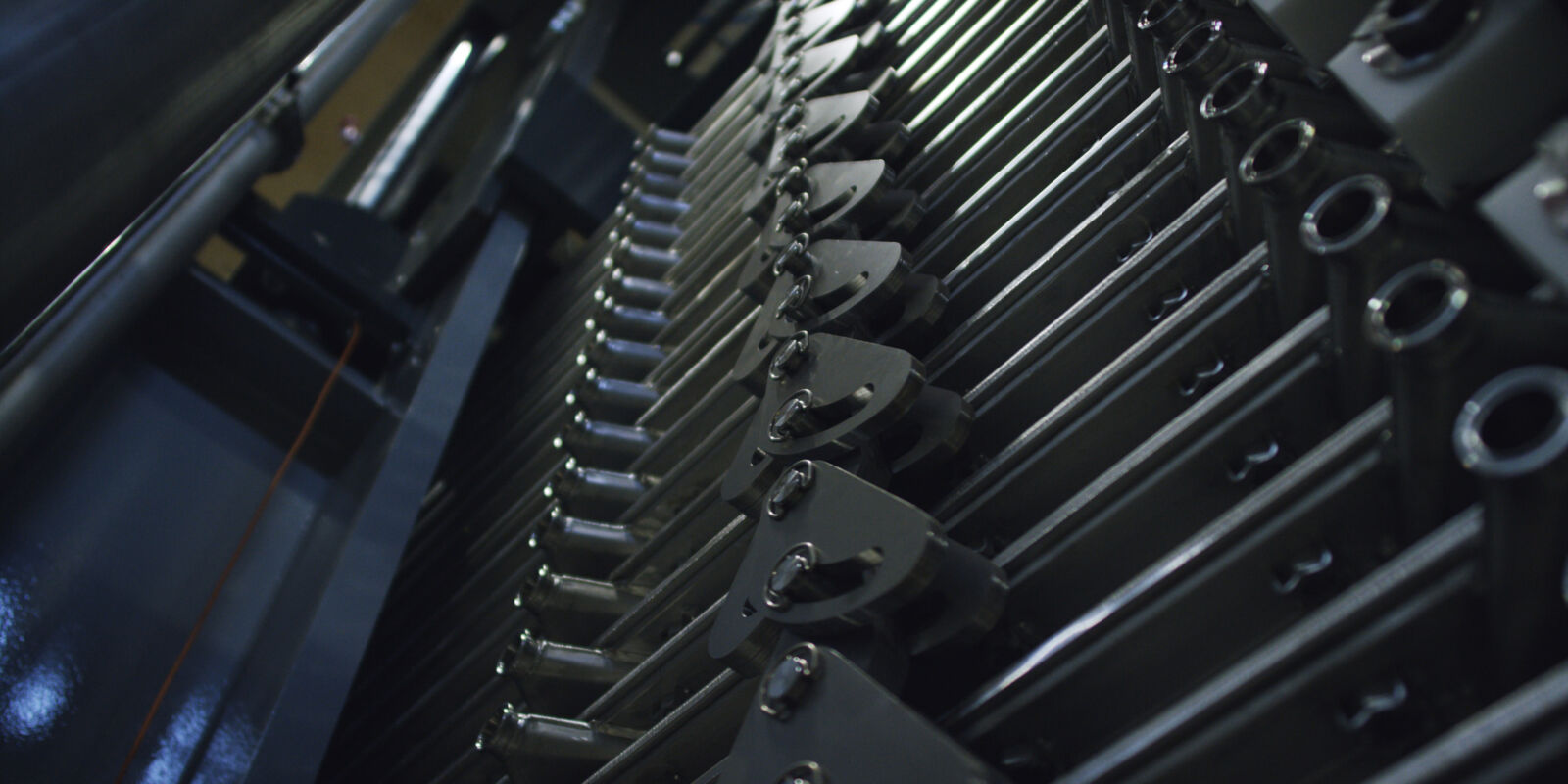Issue 2 - Misaligned plates due to using improper plate alignment procedures
One site I made a service call to had a Larox® PF filter with 22 plates that had not been maintained properly. The plate pack was badly misaligned – dry air was leaking, and the filtrate was leaking from the collector. This was causing noise issues and could have led to the contamination of the entire filter building. No one was able to work close to the filter due to the leaks and noise caused by a misalignment when changing out the plates of the filter on a previous service stop. A shutdown of the filter was required to correct the alignment of the plate pack. The entire realignment took several days to fix and field tests to ensure all was working properly. The work required 3-4 people working over several days with specialized equipment and ended up costing the customer significant service work and lost production.
How plate misalignment occurs
Many sites may not have the personnel trained to conduct a proper filter plate alignment. Plates may not be aligned at all or secondly even if they are aligned – a slide piece could wear out prematurely if too much torque is applied.
Effect
If the plates are not aligned, the site team would have to repeat the entire process again to ensure the alignment is correct. If not properly aligned, cloth tracking issues could occur, or slurry can leak. In most cases, stopping the filter to conduct repairs results in unplanned downtime. A second option would be to leave the filter working as it is but, in most cases, the issues tend to escalate if not addressed.
Best practices
It is critical to adhere to OEM workbook procedures to ensure plates are aligned which reduces future service work. In some cases, certain components need on-the-spot repair such as the VAT, pin or other components linked to the plates. Inspections are also important to detect issues early with set inspection points checked regularly. Safety issues can also cause issues – lifting methods need to be monitored and performed properly by the workers. Cranes need to be used, but specific tools are also needed – such as a lifting beam to stabilize the lifting procedure – some customers may perform the lift without the beam which causes issues.
Leveraging OEM Filter knowledge
Having a well-trained in-house service team can offer many benefits. However, for the change-out of large components that need accurate alignment, leveraging OEM support can make all the difference. By utilizing Metso Outotec filtration component replacement services, sites can benefit from the OEM team’s experience in scheduling and staging pre-outage activities, as well as executing the work quickly to significantly minimize downtime. There are other advantages in terms of having one point of responsibility for the entire maintenance event. In some cases, OEM warranties can often be extended when Metso Outotec crews perform the installation of major filtration parts. With access to global knowledge centers, troubleshooting, alignment and adjustments can often be done on the spot by our on-site crews, bringing additional uptime benefits.

